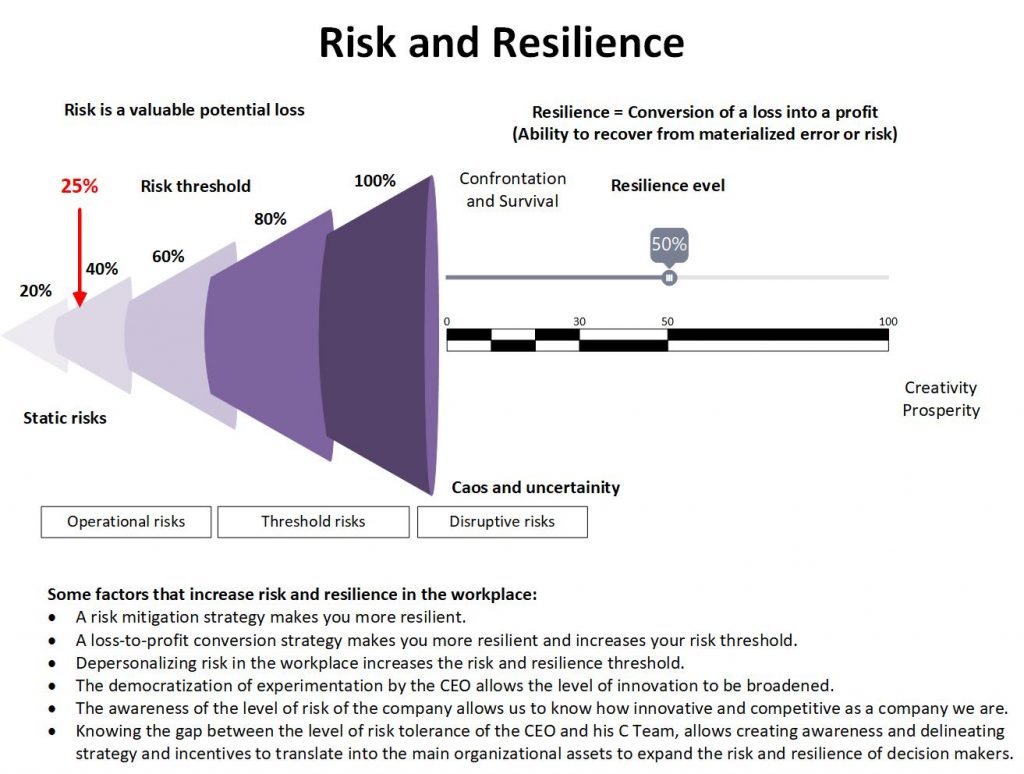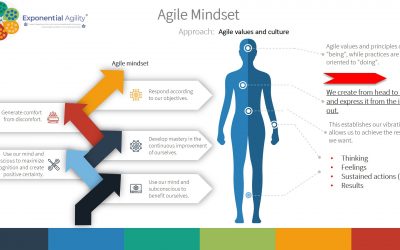Because it allows us to expand our level of innovation in the company.
Innovation is closely linked to the risk tolerance of the organization or business unit, which is why it is necessary to know its threshold, in order to increase the company’s level of competitiveness in the market.
It is about knowing yourself as an executive and after knowing these properties in our collaborators and companies.
Risk is a valuable potential loss, resilience is the capacity and speed in which we transform a loss into profit, this occurs through a system of safe experimentation and learning and the depersonalization of risk.

We responsibly assume risk, through its identification, management and the assurance of safe spaces, we learn from the materialization of risk, we detect our limiting beliefs and we outline new effective approaches, to manage risk and expand our level of resilience.
Psychological security consists of creating a safe environment where an experimentation system is executed, which allows us to manage risks effectively and if they materialize they are depersonalized, with the aim of learning as quickly as possible, turning losses into profits and levels of achievement in learning.
Experimentation is closely linked to innovation, the more focused experiments, with a high risk we execute, the greater the possibility of building something new and being more effective, for this it is necessary to evaluate the ROI of the project, to group our impact projects, in a portfolio that allows us to value them in a balanced way and according to the type of company we are looking for, innovative or moderate risk.
For this, it is necessary to be aware both personally and interpersonally of the levels of risk tolerance and our resilience, in order to be consistent in the company, keep it aligned and competitive most of the time.
Agile guarantees that what we have decided to do, we will do it well, a reliable experimentation system allows us to increase the effectiveness or level of achievement of what we do, through this duo we obtain efficiency and effectiveness respectively.
Miguel Martínez.
April 2020.
Bibliography:
- Piscione, D. P. (2014). The risk factor: Why every organization needs big bets, bold characters and the occasional spectacular failure. New York: Palgrave Macmillan.
- Ferriss, T., & Piñeiro, D. O. (2017). Titanes: Tácticas, rutinas y hábitos de multimillonarios, estrells y artistas famosos. Ciudad de México: Paidós Empresa.
- Josephs, A., & Rubenstein, B. (2018). Risk up front: Managing projects in a complex world. Austin, TX: Lioncrest Publishing.
- Bodell, L. (2017). Why simple wins: Escape the complexity trap and get to work that matters. New York, NY: Bibliomotion.
- Your Company Is Too Risk-Averse. (2020, March/April). Hardvard Business Review, (March & April).

